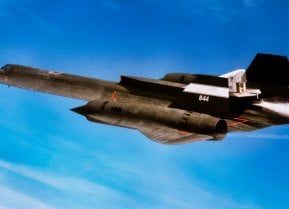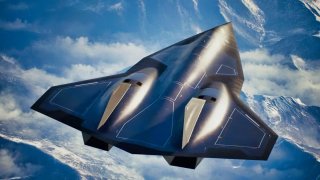SR-91 Aurora: The Mach 5 Spy Plane Was Never Real (Just a Rumor)
The SR-91 Aurora, a rumored hypersonic reconnaissance aircraft, has captivated aviation enthusiasts for decades, despite a lack of concrete evidence supporting its existence. The idea of the Aurora emerged in the 1980s as a potential successor to the SR-71 Blackbird, with alleged capabilities of reaching speeds up to Mach 5.
The Legend: The SR-91 Aurora, a rumored hypersonic reconnaissance aircraft, has captivated aviation enthusiasts for decades, despite a lack of concrete evidence supporting its existence. The idea of the Aurora emerged in the 1980s as a potential successor to the SR-71 Blackbird, with alleged capabilities of reaching speeds up to Mach 5.
The Reality: However, the U.S. government has consistently denied that such a plane was ever built, and sightings of the Aurora remain uncorroborated.
The Facts on the SR-91 Aurora: Former Lockheed Martin Skunk Works director Ben Rich clarified that "Aurora" was simply a codename for B-2 bomber funding, not a secret hypersonic plane, cementing the story as an urban legend rather than reality.
SR-91 Aurora: The Hypersonic Spy Plane That Never Was
The original story goes something like this: four decades ago, the U.S. military conceived a next-generation reconnaissance plane project to replace the aging and expensive-to-maintain SR-71 Blackbirds. The government studied proposals for a manned, hypersonic, stealth spy plane capable of traveling at a speed of up to mach 5. The concept, which allegedly reached a program cost upwards of two billion dollars by the late 1980s, was subsequently shelved, never again to be revisited.
But there is a problem with this narrative: though it is true the SR-91 does not exist as a serial product, it is still not clear if the plane ever even existed as a design concept. The government has consistently denied that such an aircraft was ever built. To date, there is no hard evidence that an SR-91 prototype took flight. There was a series of alleged sightings in the early 1990s of a plane thought to be the Aurora, but not one of these has been corroborated.
The purported evidence includes reports of tremors around the Los Angeles area; while these quakes could very well have been caused by military aircraft operating out of the Area 51 facility in Nevada, there is nothing to suggest that the plane in question was an SR-91 prototype. In another famous 1989 sighting over the North Sea, witnesses possibly mistook a B-2 Spirit for what they believed to be an SR-91; the Spirit was a recently introduced bomber that somewhat matched the triangular shape described in eyewitness accounts.
It appears that these Aurora rumors, some of which intersected with other far-fetched ideas about extraterrestrial encounters and secret military projects, were spurred less by concrete proof than by popular demand for stories confirming the SR-91’s existence.
As it stands, most of what we know stems back to a 1990 Aviation Week & Space Technology article claiming that the term “Aurora” was referenced in federal budget documents. A 1994 memoir by Ben Rich, former director of Lockheed Martin’s Skunk Works, goes far in clarifying the confusion that ensued. Rich explained that “Aurora” was simply the funding codename assigned to the B-2 project by a colonel working in the Air Force’s “black program.”
“Somehow the name leaked out during congressional appropriations hearings, the media picked up the Aurora item in the budget, and the rumor surfaced that it was a top-secret project assigned to the Skunk Works—to build America’s first hypersonic plane,” he continued. “That story persists to this day, even though Aurora was the codename for the B-2 competition funding.”
“Although I expect few in the media to believe me, there is no codename for the hypersonic plane, because it simply does not exist,” he wrote.
In the continued absence of conclusive proof to the contrary, Rich’s account can be taken as the last word in this matter. If nothing else, the Aurora saga shows just how easily a leak to the media can take on a life of its own and snowball into a full-fledged urban legend.
About the Author
Mark Episkopos was a national security reporter for the National Interest.


